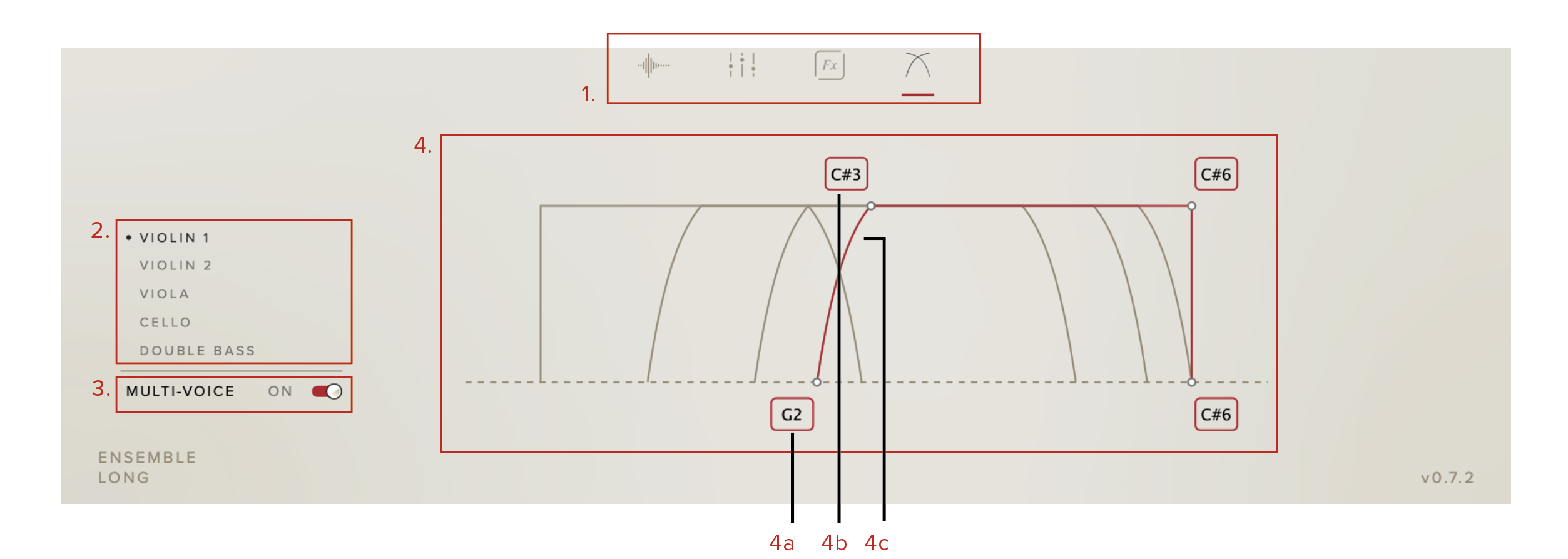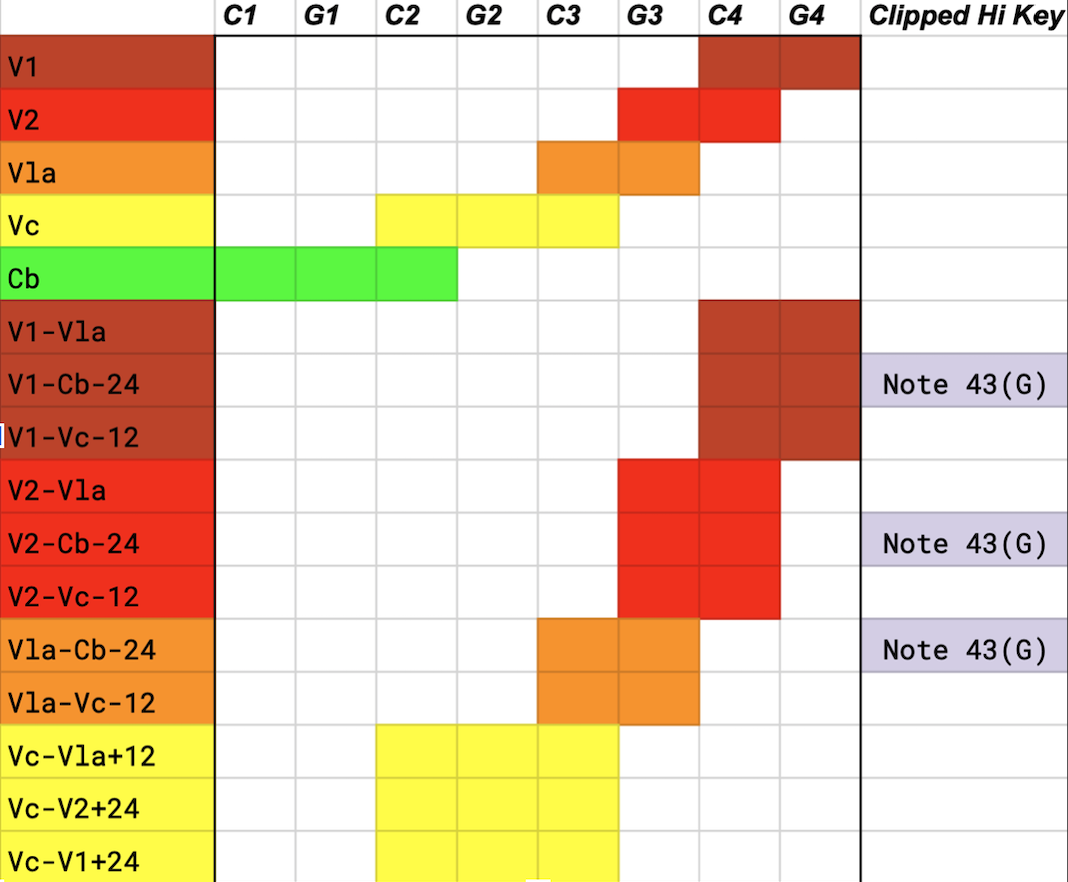Active for Ensemble patches only, the Arranger provides the ability to play ensemble patches freely and have the plugin assign the inputted notes to the relevant instrument section in a polyphonic, or monophonic manner.

1. VIEW SELECT:
Choose between the Technique Switcher, Mixer, Effects and the auto arranger. The Technique Switcher, Effects and Arranger.
2. INSTRUMENT SELECT:
Choose the instrument you wish to adjust the playable range of. Select before adjusting the arranger controls
3. MULTI-VOICE:
When turned off, each playable instrument triggers monophonically within its range.
When enabled, each instrument triggers multiple voices with its selected range.
MONOPHONIC NOTE PRIORITY
Each instrument V1, V2, Vla, Vc and Cb can only play one “logical” note at a time.
If the instruments are set up with overlapping regions in the arranger such that multiple instruments could play a particular note then notes are chosen using a priority order.
Each instrument has some “substitute” instruments. This means other instruments within the ensemble borrow the key range of the original instrument and optionally transpose up or down by one or two octaves.
The priority order is shown on the blelow:

The key ranges depicted in the diagram are just for illustration purposes. Further V1 and V2 are deliberately set differently to aid this illustration.
Imagine a note “coming in” at the top and falling down through the table. The first coloured block it reaches for an instrument not already playing “wins” the right to play the note.
If V1 is already playing and note G4 is played the priotiy becomes V1-Vla so the Vla plays it. But if the Vla was already playing then it would be passed to the Cb and transposed down by 24 semitones. If Cb was already playing then the Vc transposed down by 12 semitones would play it
One exception is that the Cb never plays as a substitute instrument above note 43 (G) so Cb will often be skipped in the priority order in favour of Vc.
4. RANGE CONTROLS
Note: All controls are adjusted from the white dots, not the note numbers.
4a Range low:
Set the lowest note of the playable range for the selected instrument.
4b Roll- off low:
Set the note that the instrument begins to fades out from.
4c Dynamic Scaling:
The steepness of the curve indicates a bigger dynamic drop.